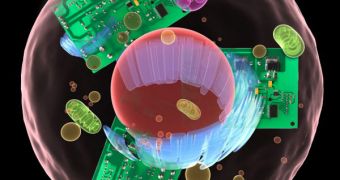Researchers at the Massachusetts Institute of Technology (MIT) warn synthetic biologists and systems biologists that attempting to replicate biological systems such as human cells using digital circuits is a mistake. He argues that analog circuits have a much better chance of getting it right.
In recent times, electrical engineers have gotten used to thinking along the lines set forth by the binary oppositions of digital logic, strings of “1s” and “0s.” When applied to biological cells, this line of reasoning is wrong, MIT expert Rahul Sarpeshkar explains.
He says that analog circuits are characterized by quantities such as voltage, which range on a scale from zero to infinity, rather than take on just two values. This is very important to keep in mind when attempting to analyze the actions of a single protein in a cell, for example.
Under digital logic, biologists may be tempted to argue that the presence of the protein A in the cell triggers the process B, whereas the absence of protein A inhibits the process B. However, this is a very limiting type of view to apply to living cells.
“The signals in cells are not ones or zeroes. That’s an overly simplified abstraction that is kind of a first, crude, useful approximation for what cells do. But everybody knows that’s really wrong,” Sarpeshkar explains.
The expert holds an appointment as an associate professor of electrical engineering in the MIT Research Laboratory of Electronics (RLE). He is himself involved in a project to mimic the functionalities of a cell using analog circuits.
The investigator will present his team's result in November, at the Biomedical Circuits and Systems Conference that will be held in San Diego. RLE research scientist Lorenzo Turicchia, postdoctoral researcher Ramiz Daniel and graduate student Sung Sik Woo are also involved in the work.
Interestingly enough, the batch of analog circuits the MIT team developed is able to replicate the functionality of living cells in more detail, and with far fewer transistors than digital circuits can.
“Let’s say the cell is a pancreatic cell making insulin. Well, when the glucose goes up, it wants to make more insulin. But it’s not bang-bang. If the glucose goes up more, it’ll make more insulin. If the glucose goes down a little, it’s going to make less insulin. It’s graded. It’s not a logic gate,” Sarpeshkar says.
“If you think about it, what is electronics? It’s the motion of electrons. What is chemistry? Chemistry is about electrons moving from one atom or molecule to another atom or molecule. They must be deeply connected: They’re both about the electrons,” the MIT expert concludes.

 14 DAY TRIAL //
14 DAY TRIAL //